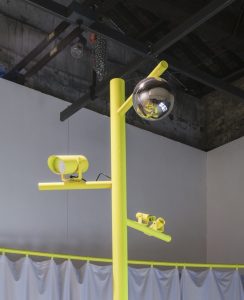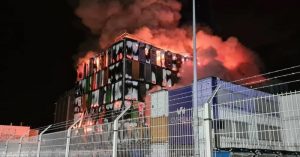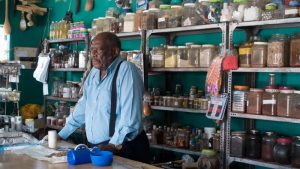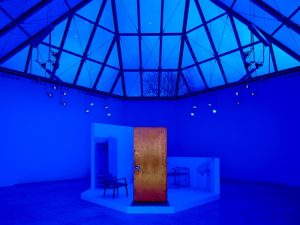While in Brussels a few days ago, i made a beeline for the Bozar to see an exhibition with a very promising title: Decolonizing Architecture.
The show was way better and more subtle than i could have imagined from a superficial reading of its description.
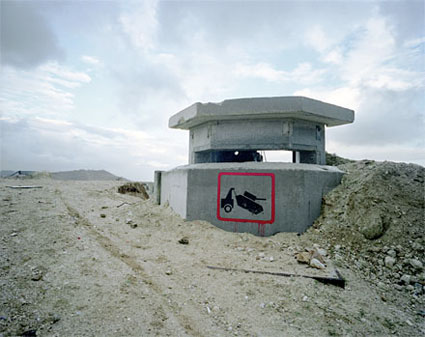 Military Camp of Oush Grab © Francesco Mattuzzi
Military Camp of Oush Grab © Francesco Mattuzzi
Decolonizing Architecture, a research undertaken by architects Sandi Hilal, Alessandro Petti and architect and theorist Eyal Weizman, throws architecture into the arms of burning social and political issues and uses the discipline to explore possible scenarios that could emerge from a partial-or complete -evacuation of Israeli colonies and military bases.
Recognizing that Israeli colonies and military bases are amongst the most excruciating instruments of domination, the project assumes that a viable approach to the issue of their appropriation is to be found not only in the professional language of architecture and planning but rather in inaugurating an “arena of speculation” that incorporates varied cultural and political perspectives through the participation of a multiplicity of individuals and organizations. How could the architecture of Israel domination be reused, recycled or re-inhabited by Palestinians?
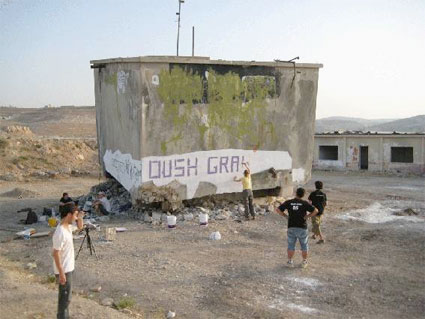 Palestinians and Internationals painting ‘Oush Grab Plaza’ on an abandoned settlement
Palestinians and Internationals painting ‘Oush Grab Plaza’ on an abandoned settlement
The two most common approaches adopted when dealing with evacuated colonial architecture are either destruction or re-use.
Destruction is often regarded as a mean to achieve ‘liberation’ from an architecture that acts as an instrument of domination and control. Making tabula rasa is never as simple as it seems, destruction generates desolation and environmental damage that may last for decades. As the project reminds us, when Israel evacuated the Gaza settlements in 2005, 3,000 homes were destroyed. One of the outcomes of the destruction was a million and a half tons of toxic rubble that poisoned the ground and water aquifers.
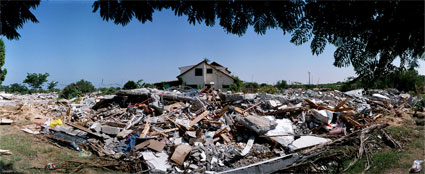 Image UNEP – United Nations Environment Programme
Image UNEP – United Nations Environment Programme
Re-use is the strategy adopted by many post-colonial governments. They would simply recycle the infrastructures for their own needs of administration, establishing a sense of continuity rather than of rupture and change: colonial villas are inhabited by new financial elites and palaces by political ones, while the evacuated military and police installations of colonial armies, as well as their prisons, are reused by the governments that replaced them.
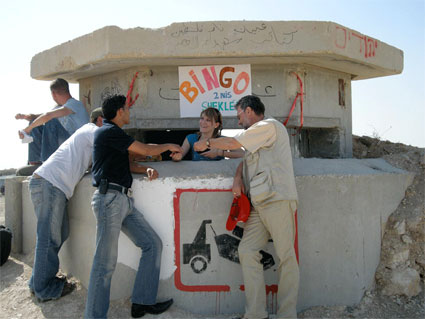 Bingo at Oush Grab Plaza, an abandonned IDF military base
Bingo at Oush Grab Plaza, an abandonned IDF military base
Is there any strategy left? Yes, there is subversion which speculates on the use of colonial architecture for purposes other than those they were designed to perform. The key principle is to reorient the destructive potential of the occupation’s built spaces to other aims.
Given the scale of Israeli construction in Palestine, and the need for housing, all three approaches may need to be adopted simultaneously. Some areas of settlements will be destroyed, some reused and others subverted. The Decolonizing Architecture project does not aim to present a single, unified architectural solution, but rather “fragments of possibility”.
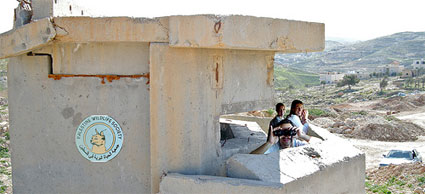 Subversion N.23. israeli’s watch tower in Bethlehem in to a birdwatching tower used by the palestinian
Subversion N.23. israeli’s watch tower in Bethlehem in to a birdwatching tower used by the palestinian
The exhibition exemplifies the architects proposals and thoughts in two case studies: the settlement of P’sagot, a hill near Ramallah that dominates the Palestinian area and the abandonned military camp of Oush Grab, near Bethleem. While the first project is an imagined set of scenarios, the second is a real battleground between Palestinians who want to turn it into a public park and Israeli settlers who try to claim it, heavily armed and escorted by the Israeli army.
You can get more details either in the PDF of the exhibition booklet or on the website of the project.
Decolonizing Architecture is running at the Bozar in Brussels until January 4, 2008.


